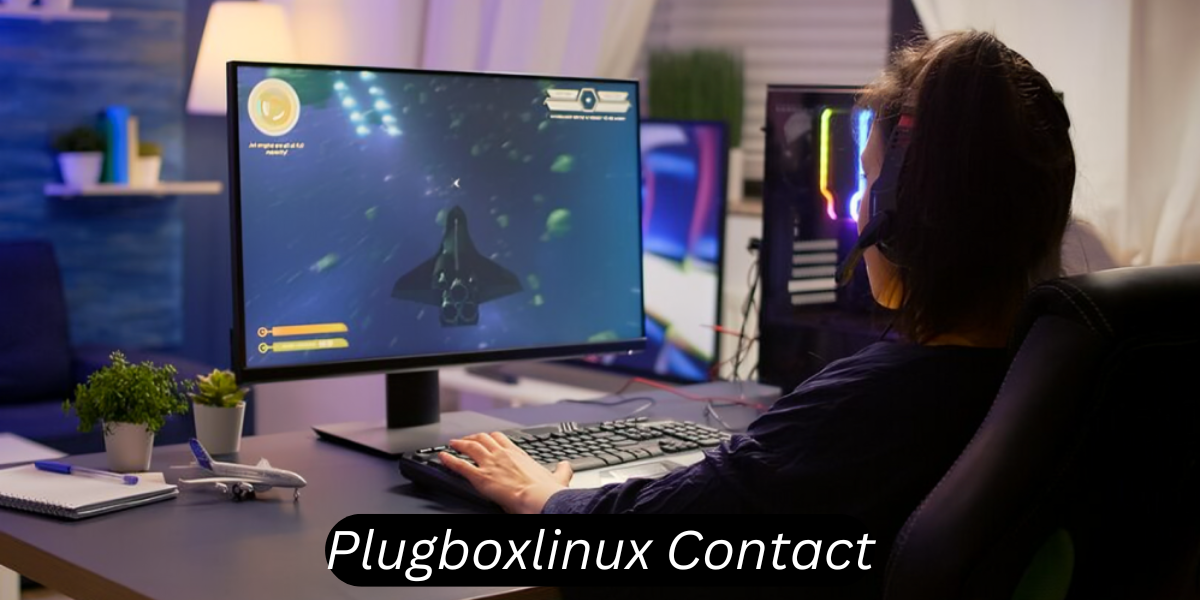
PlugboxLinux is an Arch-based Linux distribution that has gained popularity for its minimalism, flexibility, and customizability. With a focus on advanced users who prefer hands-on management of their system, PlugboxLinux allows complete control over which software to install and how to configure the system. However, this same freedom also introduces complexity. As a result, users, particularly beginners, may need assistance when dealing with installation, configuration, or troubleshooting.
Knowing how to contact PlugboxLinux’s support channels is essential to ensure a smooth experience with the operating system. Whether you’re a beginner facing installation issues, an advanced user looking for advice, or a developer aiming to contribute, this comprehensive guide will help you navigate the many ways to get support. From the official contact page to community forums and social media channels, this guide covers it all.
What is PlugboxLinux?
Before diving into the methods of contacting PlugboxLinux for support, it’s helpful to understand what PlugboxLinux is and why it might require specific channels for support.
PlugboxLinux is based on the Arch Linux distribution, known for its rolling release model and simplicity, aimed at users who prefer to build their system from the ground up. Unlike user-friendly Linux distributions like Ubuntu, which come preconfigured with a full desktop environment and essential software, PlugboxLinux provides only the bare essentials. Users must manually install the desktop environment, drivers, and other software, ensuring a lightweight system optimized for specific needs.
Key Features of PlugboxLinux:
- Minimalism: Offers a highly customizable, lightweight system where only essential packages are installed.
- Rolling Release Model: Continuously updated system, meaning you’ll always have access to the latest features and improvements.
- Flexibility: Users can build their system from scratch, tailoring it to specific needs and preferences.
- Community-driven: PlugboxLinux relies heavily on its user community for support, development, and documentation.
However, with this control and flexibility comes a learning curve. Troubleshooting, installing packages, or configuring the system often requires guidance from experienced users or developers. That’s why it’s important to know how to effectively contact the PlugboxLinux community and support network.
Why Contact PlugboxLinux Support?
There are various reasons why users might need to contact PlugboxLinux support:
- Technical Support: When facing software installation issues, system crashes, or hardware compatibility problems.
- Community Engagement: To participate in discussions, share knowledge, or ask for advice from fellow users.
- Bug Reports: To report any bugs or vulnerabilities and ensure they’re addressed by the development team.
- Contributing to Development: For developers who want to contribute to PlugboxLinux by reporting issues, submitting patches, or suggesting new features.
- Feature Requests: If you think a new feature would enhance the experience for all users, submitting a request is the way to go.
Each of these needs can be addressed via different contact methods, ranging from official support channels to community-driven platforms. Let’s explore them in detail.
Official Contact Methods
PlugboxLinux offers several official channels through which users can reach out for assistance, report issues, or contribute to the project. These methods are designed to ensure users can get the help they need efficiently.
1. The PlugboxLinux Contact Page
The official Contact Page is one of the most direct ways to get in touch with PlugboxLinux. This page is typically found on the PlugboxLinux website and provides links or forms for various types of support requests, including general inquiries, bug reports, and feature requests.
When to Use the Contact Page:
- General Support: When you have questions about using PlugboxLinux, installation issues, or need assistance with configuring specific software packages.
- Development Queries: When you’re looking to contribute to the project or need guidance on submitting patches.
- Bug Reports and Feature Requests: For reporting software bugs, security vulnerabilities, or requesting new features.
To ensure a timely response, it’s important to be as detailed as possible when submitting a request. For example, if you’re reporting a bug, provide information about your system configuration (such as hardware details, software versions, and steps to reproduce the bug). The more information you provide, the easier it will be for the team to assist you.
2. PlugboxLinux GitHub Repository
Like many open-source projects, PlugboxLinux’s code is hosted on GitHub. GitHub serves as both a repository for the code and a platform for tracking issues, submitting bug reports, and contributing to the development of the project.
How to Use GitHub for Support:
- Issue Tracker: Use GitHub’s issue tracker to report bugs, suggest features, or ask for help with specific technical issues. Before submitting an issue, it’s always a good idea to search the existing issues to see if your problem has already been addressed.
- Pull Requests: If you’re a developer, you can submit code contributions in the form of pull requests. This is how new features or bug fixes are reviewed and integrated into the project.
If you’re unfamiliar with GitHub, it might be helpful to review their documentation to understand how to submit issues, contribute code, or follow development discussions.
3. Official Documentation and Wiki
Many issues or questions can be solved by consulting the official documentation or the community-maintained PlugboxLinux Wiki. The documentation covers everything from installation guides to advanced configuration tips, and the wiki is frequently updated with user-contributed articles and tutorials.
How to Use the Documentation:
- Installation Guides: Step-by-step instructions for installing PlugboxLinux on various systems.
- Troubleshooting Guides: Detailed documentation on how to resolve common issues such as boot failures, package conflicts, or driver problems.
- System Configuration: Guides on configuring your system, installing software packages, and setting up desktop environments.
The documentation and wiki should be your first stop before contacting support, as many common questions have already been answered there.
Community-Driven Support
In addition to the official channels, PlugboxLinux boasts an active and engaged community that provides invaluable support to users. Here are some of the community-driven platforms where you can find help or contribute your knowledge.
1. PlugboxLinux Community Forums
The PlugboxLinux Community Forums are one of the best places to ask questions, find answers, and engage in discussions with fellow users. The forums are organized into categories to make it easy for users to find the right place to post their queries. Whether you’re a beginner looking for help with basic setup or an advanced user troubleshooting complex issues, the forums have a dedicated section for you.
Popular Forum Categories:
- Installation Help: For questions related to installing PlugboxLinux, whether on a physical machine or in a virtual environment.
- General Discussion: For discussions on system customization, software recommendations, or any other Linux-related topic.
- Troubleshooting: For help with specific technical issues, such as system crashes, hardware compatibility, or software configuration.
- Development: For developers to discuss coding, patches, and feature suggestions.
When posting on the forums, be sure to follow proper forum etiquette. Always search for your issue before posting, and provide as much detail as possible to ensure the community can assist you effectively.
2. Mailing Lists
Another valuable resource for getting support is the PlugboxLinux Mailing Lists. These lists are used for discussions on various topics, ranging from general support to development. Mailing lists can be a good option if you prefer email communication over forums or real-time chat.
How to Join a Mailing List:
- Visit the PlugboxLinux website and subscribe to the relevant mailing list (e.g., General Support, Developer Discussions).
- After subscribing, you’ll receive emails from other users and developers, and you can post your own questions or comments.
- Mailing lists are great for in-depth discussions, and because they’re archived, you can browse through past conversations to see if your issue has already been addressed.
Mailing lists are less immediate than forums or real-time chat, but they often foster more detailed and thoughtful discussions. They’re particularly useful for complex technical issues or development-related queries.
3. Real-Time Support: IRC and Telegram
For real-time support, PlugboxLinux has an active presence on IRC (Internet Relay Chat) and Telegram. These platforms allow users to get help or discuss issues with other users and developers in real-time, making them ideal for urgent questions or collaborative problem-solving.
IRC
The PlugboxLinux IRC channel is hosted on the Freenode network, a popular platform for open-source communities. To join, you’ll need an IRC client (e.g., HexChat, WeeChat), and then you can connect to the Freenode network and join the PlugboxLinux channel.
Once you’re in the channel, you can ask questions, share tips, or participate in ongoing discussions. IRC is particularly popular among more experienced users and developers, so it’s a great place to get help with advanced topics.
Telegram
Telegram is a modern messaging platform that has become popular among tech communities. PlugboxLinux has an active Telegram group where users can ask questions, share ideas, and get real-time help.
To join the group, search for the PlugboxLinux channel on Telegram and follow the link to join. Because Telegram is available on both desktop and mobile, it’s a convenient option for users who want to stay connected on the go.
Social Media Channels for PlugboxLinux
In addition to the traditional support channels, PlugboxLinux maintains a presence on several social media platforms. These platforms can be a great way to stay up-to-date on news, releases, and community events, as well as to get quick answers to simple questions.
1. Twitter
PlugboxLinux’s official Twitter account is frequently updated with news about new releases, security updates, and other important information. While Twitter isn’t the best platform for in-depth support, it’s a good way to stay informed and engage with the community.
You can also use Twitter to ask quick questions or get in touch with developers, but for more complex issues, it’s better to use the forums or IRC.
2. Reddit
PlugboxLinux has a subreddit where users can post questions, share tips, and discuss all things Linux. The PlugboxLinux subreddit is an excellent place for casual discussions, as well as for getting help with specific issues.
Reddit’s upvote system makes it easy to find the most popular or helpful answers to questions, and because the subreddit is community-driven, it’s constantly updated with fresh content.
3. YouTube and Blogs
Some members of the PlugboxLinux community maintain YouTube channels or blogs where they post tutorials, reviews, and guides. These can be great resources if you prefer to learn through video content or written guides.
To find these resources, a quick search for “PlugboxLinux” on YouTube or Google will bring up a wealth of community-generated content that can help you learn more about the distribution and troubleshoot specific issues.
Best Practices for Contacting PlugboxLinux

No matter which method you choose to contact PlugboxLinux, there are a few best practices you should follow to ensure that your questions or issues are resolved as quickly as possible.
1. Be Detailed and Specific
When asking for help, always provide as much information as possible. This includes your system configuration (hardware, kernel version, etc.), the steps you took leading up to the issue, and any error messages you encountered. The more details you provide, the easier it will be for others to assist you.
2. Search Before Asking
Before posting a question or submitting a bug report, always use the search function on the forums, mailing lists, or documentation to see if your issue has already been addressed. This can save you time and reduce the chances of duplicate posts.
3. Follow Up
If someone helps you resolve an issue, be sure to follow up by confirming that the solution worked. This not only shows appreciation but also helps others who may encounter the same problem in the future.
4. Stay Involved
Once your issue is resolved, consider staying involved with the PlugboxLinux community. Open-source projects rely on the contributions and engagement of their users, and by sharing your knowledge or offering help to others, you can contribute to the success of the project.
For More Information Visit: Peace magazines
Conclusion
PlugboxLinux is a powerful and flexible Linux distribution, but it also comes with a learning curve, particularly for beginners. Whether you’re looking for technical support, want to contribute to development, or simply want to engage with other Linux enthusiasts, there are multiple ways to contact PlugboxLinux and get involved with the community.
From the official contact page and GitHub repository to community-driven forums, IRC, and social media, PlugboxLinux offers a variety of methods for getting help and staying connected. By following the tips and best practices outlined in this guide, you’ll be well-equipped to reach out to the community, get your questions answered, and contribute to the ongoing success of PlugboxLinux.
FAQs
1. How can I get in touch with PlugboxLinux for general support?
You can reach PlugboxLinux for general support through their official Contact Page on the website. The contact form allows you to submit queries related to installation, configuration, or troubleshooting. For more technical issues, using the forums or GitHub issue tracker may offer faster, community-driven solutions.
2. Where can I report a bug or suggest a feature for PlugboxLinux?
To report bugs or suggest features, head to the PlugboxLinux GitHub repository. Use the Issue Tracker on GitHub to file bug reports or submit feature requests. Be sure to provide detailed information about your system setup and the issue you’re encountering.
3. Is there an official forum for PlugboxLinux users to ask questions?
Yes, the PlugboxLinux forum is an official space where users can ask questions, share solutions, and engage in discussions. The forum is moderated by both developers and experienced community members, making it a valuable resource for troubleshooting and learning.
4. Can I get real-time support from PlugboxLinux?
For real-time support, PlugboxLinux has an IRC channel where you can chat with developers and other users. The IRC channel is hosted on Libera.Chat, and it’s a great way to get quick answers to immediate questions or participate in technical discussions.
5. Does PlugboxLinux have any social media channels for updates and support?
Yes, you can follow PlugboxLinux on Twitter for official updates, news, and community interactions. Social media is an excellent way to stay informed about the latest developments and announcements, though it may not be ideal for in-depth support.
6. How do I join the PlugboxLinux subreddit?
PlugboxLinux has a community-driven subreddit where users can post questions, share tips, and discuss Linux-related topics. It’s a more informal space, ideal for casual discussions and discovering new ideas or solutions. You can join by visiting Reddit and searching for PlugboxLinux.
7. What should I include when asking for support on forums or GitHub?
When asking for help, always include detailed information such as your hardware setup, kernel version, any configuration changes you’ve made, and any error messages you’re encountering. Providing specific details helps developers and community members diagnose and resolve issues faster.
8. Is there a way to contribute to PlugboxLinux besides reporting bugs?
Yes, you can contribute to plugboxlinux contact in various ways. Aside from reporting bugs or suggesting features, you can contribute by participating in the forums, submitting code on GitHub, writing documentation, or helping other users with their questions. Every contribution helps improve the project.







